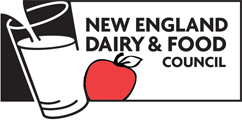As nutrition research progresses, there have been changes in the way we’ve thought about how our food choices can influence health outcomes. One example of this can be seen in the Dietary Guidelines for Americans, which over the years has made shifts from focusing on individual nutrients, like fats, protein, and carbohydrates, to recommending healthy meal patterns.
After all, we don’t just eat nutrients, we eat food!
A Mediterranean diet is an example of a dietary pattern that has been shown, through research, to support cardiovascular health and healthy aging, among other things. For the last two years, the Mediterranean diet was ranked #1 for Overall Diet by the U.S. Health and News Report (it shared this spotlight with the DASH diet in 2018). In the 2015-2020 Dietary Guidelines for Americans, a Healthy Mediterranean-Style Eating Pattern is included as one option for guiding healthy eating day-to-day.
The Mediterranean diet got its name from the style of eating that is common in countries that touch the Mediterranean Sea. This includes Greece, Italy, France, and others. The diet is not specific to one of these countries, but rather, is characteristic of the region.
What does a Mediterranean diet look like?
The Mediterranean diet emphasizes:
- Plant-based foods like fruits, vegetables, and whole grains
- Heart healthy fats from olive oil and nuts
Includes moderate amounts of:
- Dairy, often fermented varieties like yogurt and cheese
- Animal protein, with fish being the preferred choice
And limits:
- Red meat
Other elements of the diet include regular physical activity and sharing meals with others. Enjoying moderate amounts of red wine (1 glass/day for women,and up to 2 for men*) is also an option within a Mediterranean-style eating pattern.
What is dairy’s role in the diet?
Can you still enjoy dairy while following a Mediterranean-style diet? Yes!
In the Healthy Mediterranean-Style Eating Pattern, two servings of dairy are recommended daily —which is slightly lower than the three recommended in a Healthy U.S. Eating Pattern. However, research continues to emerge on the benefits of dairy in this particular diet.
For example:
- A 4-year prospective study that looked at Type 2 Diabetes (T2D) risk in a group of older adults who had a high cardiovascular risk concluded that dairy foods in a Mediterranean-style diet may be a key component in reducing risk of T2D.
- One randomized controlled, crossover study in Australia found that including 3-4 servings of dairy a day in a Mediterranean diet lowered blood pressure and plasma triglycerides (blood lipids), and improved HDL cholesterol (also known as “good” cholesterol) and total cholesterol/HDL-C ratios in participants who were at risk for cardiovascular disease.
So what’s the bottom line?
Dairy does have a role in the Mediterranean diet, as well as other healthy eating patterns. Its nutritional package is hard to replace. In fact, for children ages 2-18 in the U.S., dairy, and particularly milk, is the top food source of three out of the four nutrients of concern: calcium, vitamin D, and potassium.
Mediterranean-inspired recipes
The following Mediterranean-inspired recipes feature dairy as either the star ingredient or a component in the dish. Try and enjoy!
- Feta Dill Dip
- Za’tar Roasted Fingerling Potatoes with Yogurt Tahini Sauce
- Tiropita (Greek Cheese Pastries) courtesy of Carolines Cooking
- Halal Cart-style Chicken and Rice with White Yogurt Sauce courtesy of A Family Feast
 *The 2015-2020 U.S. Dietary Guidelines for Americans recommends that if alcohol is consumed, it should be consumed in moderation—up to one drink per day for women and two drinks per day for men—and only by adults of legal drinking age.
*The 2015-2020 U.S. Dietary Guidelines for Americans recommends that if alcohol is consumed, it should be consumed in moderation—up to one drink per day for women and two drinks per day for men—and only by adults of legal drinking age.
—

